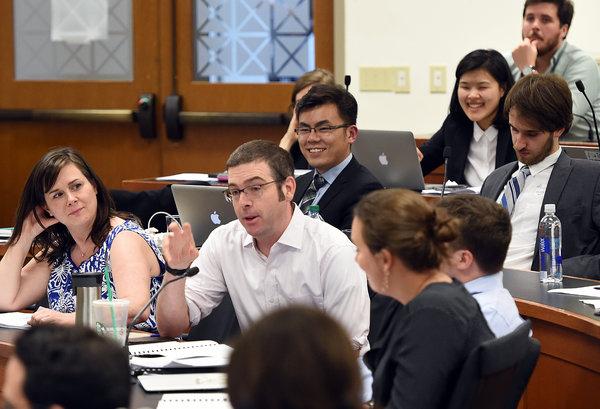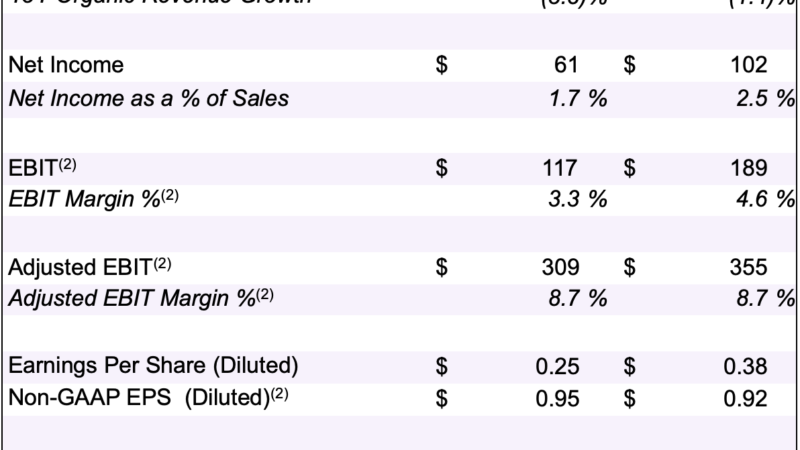As technology becomes increasingly pervasive in American life, universities across the United States have been devising ways to teach students how to grapple with the consequences on society.
Now, 21 leading universities are banding together to promote their various programs. On Monday, the schools announced that they had formed a new organization called the Public Interest Technology University Network.
Members of the group include Arizona State University, the City University of New York, Harvard University, Howard University, the Massachusetts Institute of Technology, Stanford University and the University of California, Berkeley. Their goal is to train the next generation of software engineers, policymakers, civic leaders and social justice advocates to develop, regulate and use technology for the public good.
In other words, the group aims to both humanize technologists and technologize humanists.
“We think about two halves of the pipeline,” said Alexandra Givens, executive director of the Institute for Technology Law and Policy at Georgetown Law School. “One is helping technologists think about the social, ethical, legal and policy implications of their work.”
The other, she said, is helping students interested in law, government and nonprofit careers to learn computational and technology skills to serve the public.
“We spend a ton of time telling students, ‘If you care about civil rights in America today, or if you care about criminal justice reform, you have to understand technology and speak up about how technology is being deployed,’” Professor Givens said.
Public interest technology combines existing academic disciplines like computer science, law and sociology. The need for such an interdisciplinary field has recently taken on added urgency after a spate of scandals at Facebook, Google and other tech firms.
Students are now clamoring for new technology courses and degree programs that make the public good a priority over industry agendas — and universities, along with foundations that support them, are rushing to respond.
“We can’t pretend that the technology companies are set up to work in the public interest,” said Darren Walker, the president of the Ford Foundation. “They are constructed to work on behalf of private interests, the interests of their owners and their shareholders.”
Since 2015, the Ford Foundation, the MacArthur Foundation and other nonprofit groups have invested more than $18 million to advance the field of public interest technology.
The idea of interdisciplinary technology studies, however, is not new.
In 1971, Stanford became one of the first universities in the United States to offer an academic program now called Science, Technology and Society, a field that has become a mainstay at many other universities. In 2005, Princeton created the Center for Information Technology Policy, where researchers study the vulnerabilities of technologies like electronic voting machines and teach courses with titles like “Artificial Intelligence and Public Policy.”
Arizona State University, another early adopter, has a well-established Ph.D. program in the human and social dimensions of science and technology. It also has a research center devoted to advancing responsible research in innovation.
The new university network is working to rebrand such efforts as “public interest technology.”
“Public interest technology is a critically important area for our attention,” said Mark Searle, executive vice president of Arizona State. “As technology becomes more ubiquitous, it is essential we consider the impacts on people, whether unintended consequences or designs that exclude certain groups or disadvantage them in some way.”
The universities are not simply trying to unite existing and nascent programs under one academic umbrella. Their strategy is to make public interest technology as integral to the technology industry as public interest law is to the legal profession.
In the late 1960s, the Ford Foundation began developing strategies to train law school students to work on behalf of the public, including minorities and immigrants. It also financed new legal advocacy groups like the Native American Rights Fund.

As part of that movement, law schools began to create clinics where students could provide legal services to the public. Law firms made pro bono work part of their mandates. And new areas of legal expertise developed, including environmental and human rights law. Along the way, Skadden Arps and other prominent law firms started fellowship programs that pay graduating law students to work for public interest law firms and advocacy organizations.
Proponents have similar aims for public interest technology. They envision new degree programs, new organizations and new career pathways for both tech company employees and students.
“The idea that a young person could look at a tech career and see that as a path to working in the Justice Department, or any nongovernment organization or local government agency, as much as going to a tech company is something that I think is badly needed,” said Anne-Marie Slaughter, the chief executive of New America, a research organization in Washington whose focus includes public interest technology. (New America has received funding from tech companies like Facebook and Google, as well as the Ford Foundation).
This semester, for instance, M.I.T. and Georgetown Law are offering a joint course in privacy law and technology. In the class, small teams of M.I.T. engineering students and Georgetown law students work together to study issues like the use of smartphone geolocation tracking by police departments. Then, the teams are assigned to write privacy legislation regulating the technology.
Rachel Wei, a computer science major at M.I.T. who is taking the course, said she felt that she was “picking up an entire new field” in one semester.
“Everybody who is researching, working at these big companies,” Ms. Wei said, “believes that what they’re doing is good. But we have to understand the other side of the issue.”
In an era when tech giants seem to have unchecked power, Mr. Walker of the Ford Foundation said encouraging students to enter public interest tech was all the more important.
“If this new digital world, which is supposed to be so much better and supposed to help us all solve centuries-old challenges, actually compounds those problems, it will be in part because there’s not enough people fighting for the public interest,” Mr. Walker said.






